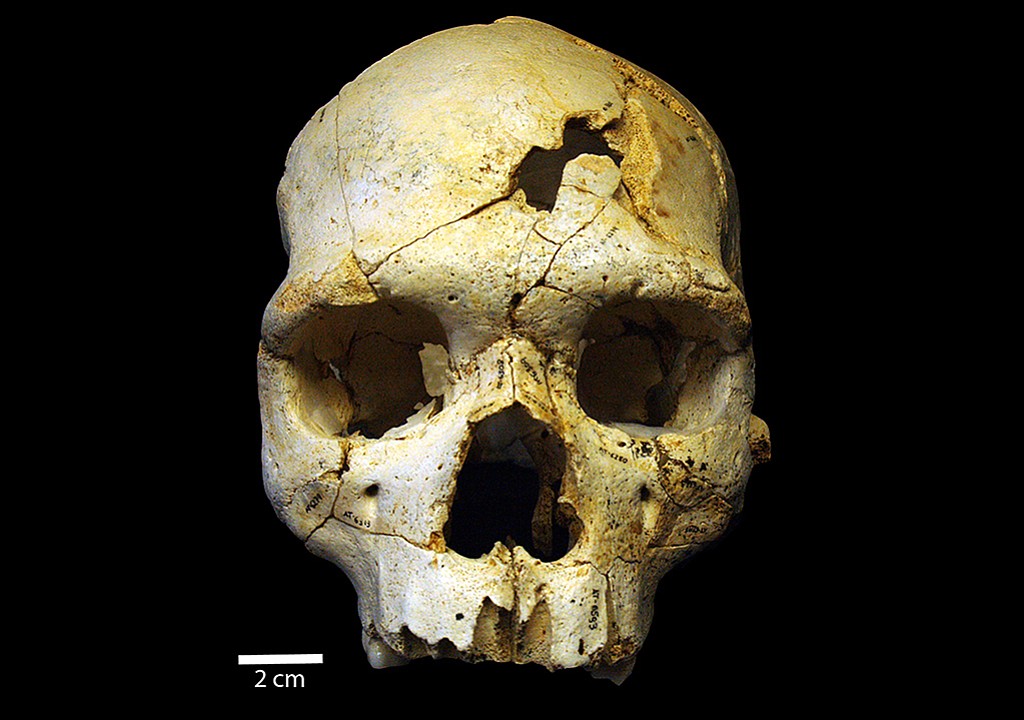It’s a whodunit that dates back 430,000 years.
After painstakingly piecing together the fractured skull of a pre-Neanderthal hominid, archaeologists say they have discovered the earliest known evidence of a human ancestor who was murdered.
The findings, published Wednesday in PLOS One, suggest that interpersonal violence may be baked into the human experience.
“Anthropologists are always asking what makes us human, and are humans inherently violent,” said Danielle Kurin, a forensic anthropologist at the University of California, Santa Barbara. “This study contributes to that debate by suggesting intentional assault between two people has deep roots in our hominid human history.”
Rolf Quam, a paleoanthropologist at Binghamton University, put it this way: “One implication of the study is that murder is a very ancient human behavior.”
The victim was likely male and probably in his 20s, said Quam, a co-author on the study. The skeletal remains were discovered in a cave system in northern Spain known as Sima de los Huesos, or “Pit of Bones.”
Using modern forensic techniques not so different from what you might see on “CSI,” the researchers determined that the victim was facing the assailant when the violence occurred. They also know the strike occurred at or near the time of death because the pattern of the fracture on the skull suggests it broke while enmeshed in living tissue.
The cranium shows evidence of two blows located adjacent to each other just left of center on the forehead. Both injuries were strong enough to break through the bone and puncture the brain, the researchers said.
“Keep in mind these guys were robust and this was one of the denser parts of the skull,” said Kurin, who was not involved in the research. “You would need a lot of force to make a fracture that causes the bone to get knocked into the brain.”
The authors are not sure what weapon was used, but a wooden spear or stone hand ax are likely candidates. Metal tools were not around at that time.
“We are pretty sure that these two fractures are the result of two repeated blows with the same implement,” Quam said. “And that implies a clear intent to kill.”
Although there is evidence of cannibalism among early humans dating back 900,000 years, evidence of murder has been harder to come by. The authors cite two known examples in the paper, but in both cases, it is not clear that human-inflicted injury was indeed the cause of death.
“What makes our paper so unusual is that we think we have evidence that this person died of these wounds,” Quam said.
The victim was discovered at the bottom of a vertical shaft that lies about 0.3 miles from the entrance to the underground cave system. So far, archaeologists have found 6,700 bones from at least 28 individuals at the bottom of the cavern that can only be entered by a straight 45-foot drop from the floor of the cave.
Lead author Nohemi Sala of the Complutense University of Madrid is still looking to see if there is any evidence that the other 27 hominids in the pit were murdered as well. She has not turned up anything yet.
The research team concludes that the victim could not have sustained the lethal injuries in the cavern, and so must have been thrown into the pit after death – perhaps as a form of early burial.
If that is the case, then it seems lethal rage is not the only human behavior that has deep roots in our past, the authors say.
“We believe that the intentional interpersonal violence is a behavior that accompanies humans since at least 430,000 years ago, but so does the care of sick or even the care of the dead,” said Ignacio Martinez Mendizabal of the University of Alcala in Madrid, who also worked on the paper. “We have not changed much in the last half million years.”



